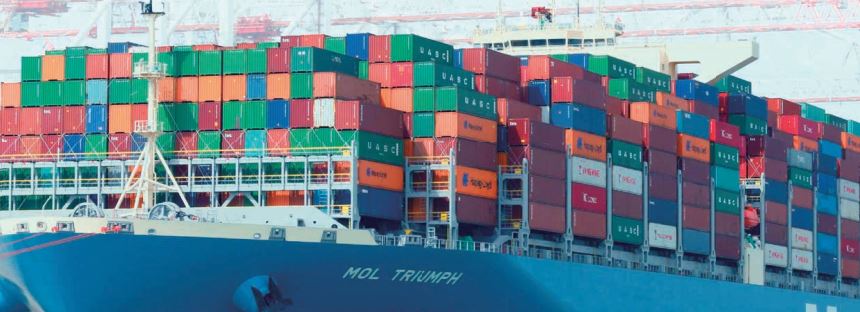Shipping contributes a large volume of CO2 emissions to the environment and with an increase of cargo it is indispensable to step up our efforts to reduce this burden, according to Junichiro Ikeda President & CEO Mitsui O.S.K. Lines.
In MOL’s latest Safety, Environmental and Social report, President Ikeda says that the environment presents a number of business opportunities and ways to gain competitive advantage.
The report, which focuses on Bluer Oceans, Cleaner Environment and Sustainable Future, sets out MOL’s three strategies for its management plan. These include:
- Selecting opportunities for new investments and pursuing business models focused on cash flow.
- Prioritize resources to develop and defend business fields.
- Set marine technical skills, ICT, technology development, environment, and workstyle reforms.
Above right: Junichiro Ikeda President & CEO MOL
As part of its contribution to environmental sustainability, MOL aims to reduce GHG emissions by 2% per unit load every year in comparison with the previous year, and to reduce emissions by 50% per transport unit in 2050. MOL estimates it can achieve a 30% reduction using its existing technologies and programs but will require new technologies and innovations to achieve the other 20%.
MOL will also ensure that all of its vessels will be equipped with ballast water treatment systems and will look at new ways to expand applications for environmental technologies to meet SOx and NOx emissions.
Other initiatives and strategies that MOL has undertaken to improve its environmental responsibility include:
- Building an LNG-fulled tug-boat – this will be deployed in Osaka Bay in April 2019.
- Green Corridor research project – MOL reached an agreement with five other companies including DNV GL to examine the feasibility of an LNG-fulled capsize bulker to minimise SOx and NOx emissions from ships.
- Operation of the world’s largest 20,000 TEU containership – MOL operates the vessel along the Asia/North Europe routes. It is equipped with a range of advanced energy-saving technologies including low friction underwater paint, a high efficiency propeller and rudder, a Savor Stator stream fin on the hull body, and an optimized fine hull form, estimated to reduce fuel consumption and CO2 emissions per container moved by about 25-30% when compared to 14,000 TEU-class containerships.
- Operation of its own Sunflower Furano – the ferry uses contrarotating propellers and a hybrid propulsion system and offers significant savings in fuel efficiency. Three newbuilding ferries with the same features are expected to be launched by 2018.
Right: MOL Managing Executive Officer Toshiaki Tanaka, second from left, at the signing ceremony of the LNG-fuelled capesize bulker.
Fathom-News
editor@fathom-mi.com




































